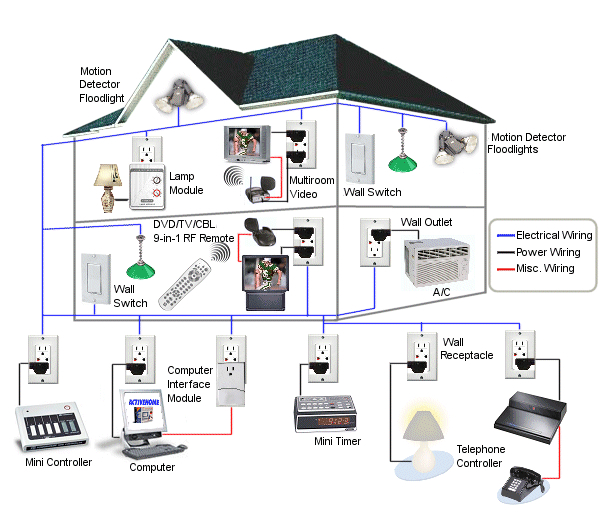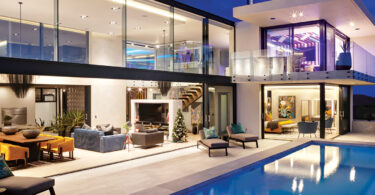 I have a little secret. Well, if you have read some of my work it’s not so secret by now. I am a tech-junkie. I love technology and the innovative things it can do; how it makes my life easier (and more fun); and how it has connected me with so many things I would not otherwise have had access to.
I have a little secret. Well, if you have read some of my work it’s not so secret by now. I am a tech-junkie. I love technology and the innovative things it can do; how it makes my life easier (and more fun); and how it has connected me with so many things I would not otherwise have had access to.
A simple thing like getting wireless internet in my home has made a huge difference to how I use my smart tablet – no need for a sim card and 3G connection, I just arrive home and it connects automatically; how I watch TV, which has opened up a world of streaming video and audio not limited to what local television providers can offer; and how I can connect to any computer in my home without dragging the modem along with me.
So it was with much anticipation that I met with the MD of AV distribution company, iLed, earlier this week. In a nutshell, iLed is a full-service custom installation distributor, and makes your static home come alive with home automation, home theatre, lighting control and multi-room audio and video. Ooh! All the things on my wishlist for Santa (hint hint, Santa).
MD Ivan Potter has a very advanced and forward-thinking view of electrical and electronic infrastructure in one’s home, and certainly influenced my way of thinking when he explained the “old way” compared to the “new way”.
Here’s a synopsis of the difference:
The old way
Lighting: An electrical cable is run from a circuit breaker in the electrical distribution board to the light switch in a room, from the light switch to the light; if there is more than one light, the lights are daisy chained (in parallel).
Wired ethernet network and wireless ethernet network: Not typically
Telephony: Wired telephone cable from a central point to one or two rooms with a telephone socket; sometimes daisy chained from room to room.
Distributed audio: Speaker cables from each room to a central amplifier.
Distributed video: RG6 for TV antennae point daisy chained to each room. RG59 for composite or 3 x RG59’s for component from each room to a central AV receiver.
Access control gates: Wireless RF remotes in conjunction with wired telecom.
CCTV: RG59 wired to a central video recorder.
Control system: Wall mounted touch panels wired back to a central processor.
HVAC (Heating ventilation air conditioning): Normally provided with a standalone infra red remote control.
Sprinkler or water management: Standalone water controller.
Pool pump: Standalone timer.
Energy Management: None.
These systems are generally installed at various stages as the home owner becomes aware of the benefits and advantages – this knowledge comes with education about the technologies and understanding how they fit into a home and benefit its residents. Getting your existing home tech-enabled can be accompanied by a lot of surface work done, which can affect its aesthetics. A well-planned infrastructure from the outset, however, can reduce the wiring required to have a modern, fully-integrated home, so your home will light up, warm up, sound up and keep your guests entertained – without anyone knowing how it all happened!
I mention establishing the foundations of your home automation at infrastructure stage as, while many types of technology change and advance rapidly, there are certain foundational technologies that remain the same. “Using an industry standard and future-proof cable, as well as adopting wireless networking, will simplify your design and ensure you have access to all the best features technology provides now and into the future,” says Ivan.
So let’s then see how the “new way” has changed the application of various technologies in one’s home:
Lighting: There are two ways of handling this – centralised or distributed. In a centralised installation, the lighting controllers are mounted next to the lighting distribution board. CAT cable is run from the lighting board to each light switch for independent light scene control. With distributed lighting, the light controllers and wall switches are wireless and no cable considerations are required. An IP bridge connects the lighting system to the network providing complete lighting control from anywhere in the world.
Wired Ethernet Network: ACAT cable wired to a wall plate for each network point is required. Remember that the house will be covered by a wireless network cloud meaning that unless you require a dedicated high speed connection (typically for downloads or HD media streaming), you might not need this.
Wireless Ethernet Network: Wireless access points placed to provide a wireless cloud around the house. Each wireless access point is connected via a CAT cable. The system must be designed by trained industry professionals to provide a seamless single wireless cloud ensuring no network blind spots.
Telephony: CAT cable to the wireless VOIP controller or CAT cable to a wall plate.
Distributed audio: CAT cable from each room or zone to a central AV distribution system. This single cable handles audio, HD video and control. A set top controller breaks out the HD video, audio and control. You can combine this system with distributed audio.
Control system: See distributed audio for zones (or rooms). The touch panels are wireless cost effective iPads/iPhones or Android devices. Touch panels can be wall mounted – both in wall fixed and motorised docking stations are available.
Intrusion: Individual detectors wired to a central alarm panel as per insurance requirements. The alarm panel must have an IP interface. ACAT cable to the router is required.
Access control gates: Wireless remote plus single CAT provides manual gate control, audio and video for intercom.
CCTV:CAT cable to each IP camera.
HVAC (heating ventilation air conditioning ): A single CAT cable to each IP HVAC device.
Sprinkler or water management: Single CAT cable.
Pool pump: A single CAT cable.
Energy Management: A single CAT cable to energy management IP controller. The energy management controller has CTs (current transformers) that measure current to either the entire house or specific devices. This information is then used to determine when to switch on loads leading to a reduction in electrical load costs. Load rotation and time control can further reduce costs.
Wow. That bears some thinking about. (And if you aren’t too au fait with some of the tech terms, pop onto the iLed website for some really interesting and informative articles).
Visit iLed for more information.
For more lifestyle news visit EC Mirror Online.
[signature:kerry]









Leave a Comment